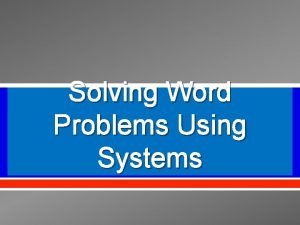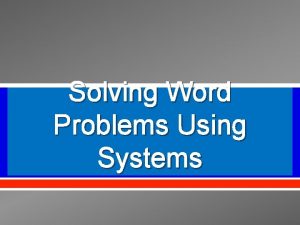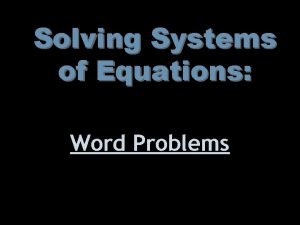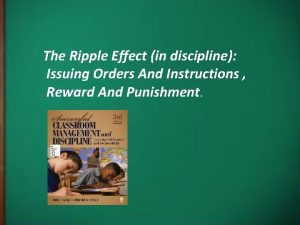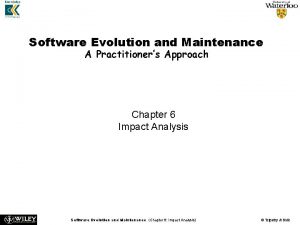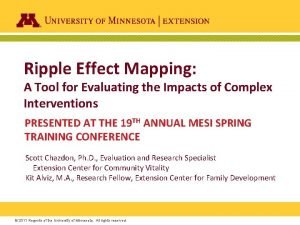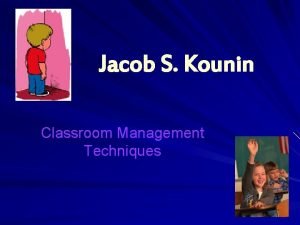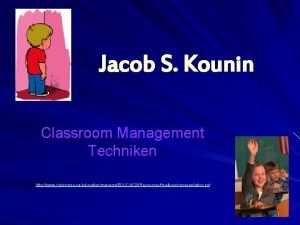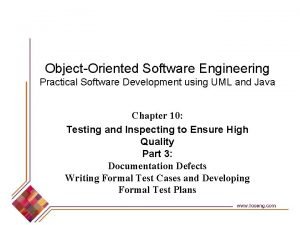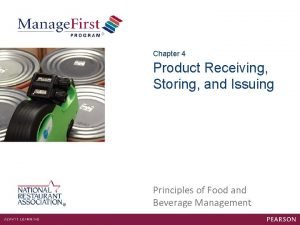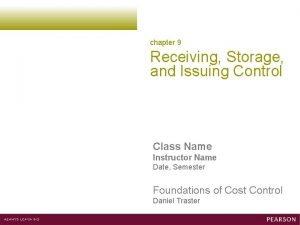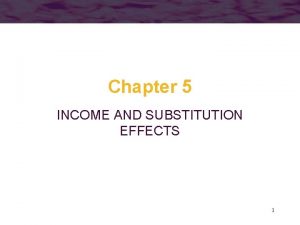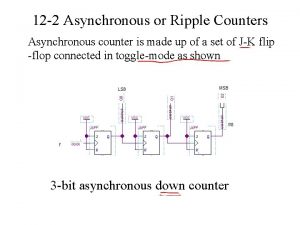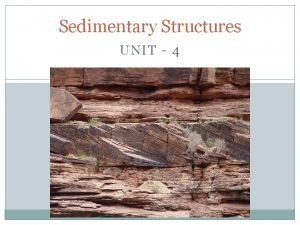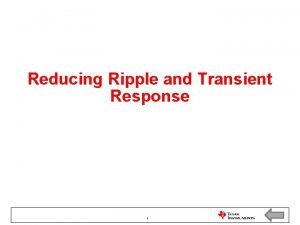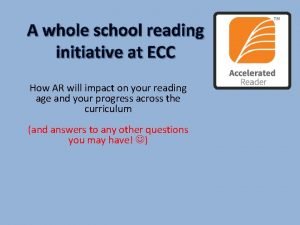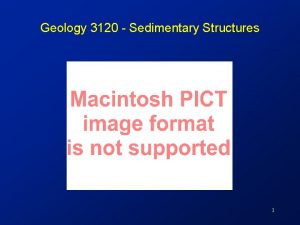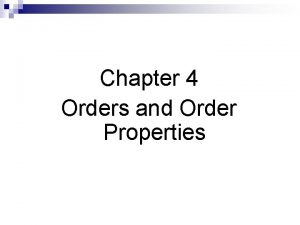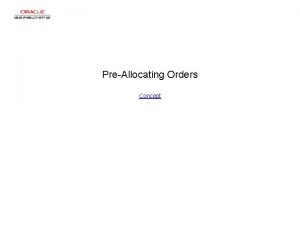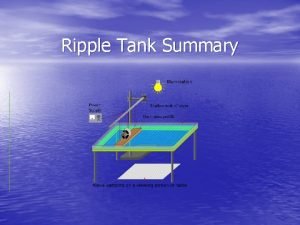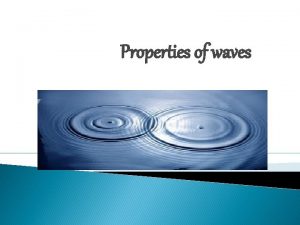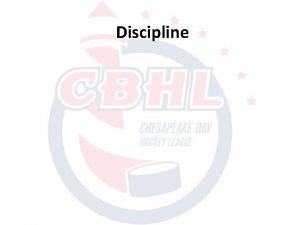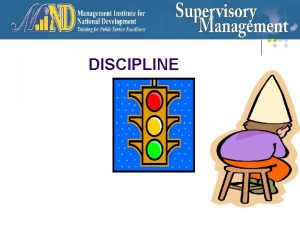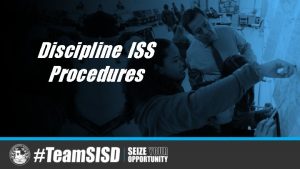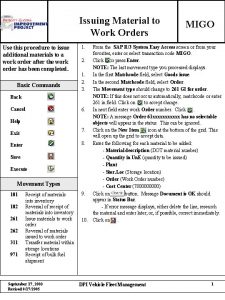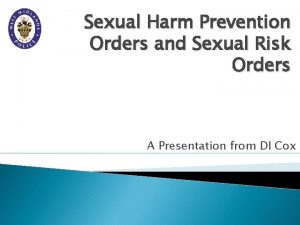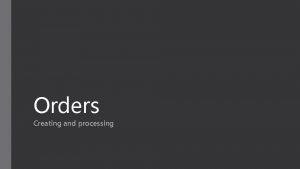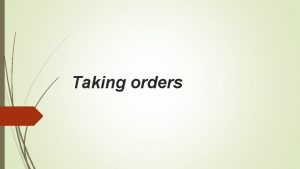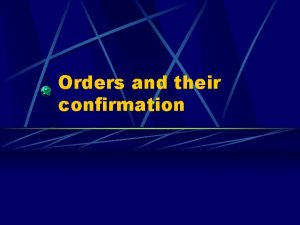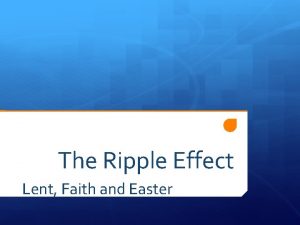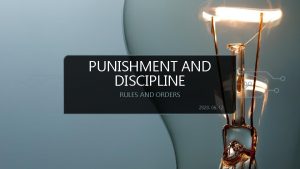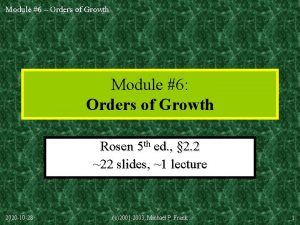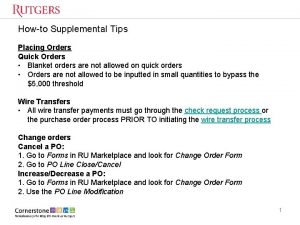The Ripple Effect in discipline Issuing Orders And































- Slides: 31

The Ripple Effect (in discipline): Issuing Orders And Instructions , Reward And Punishment.

INTRODUCTION

Classroom Management -: Key Ideas Ø Ripple effect Ø Issuing order and instructions Ø Reward and punishment Reference: - Lee Canter. (1997). Classroom Management For Academic Success : Raven (N Y)

THE RIPPLE EFFECT


Jacob Kounin Ø Class room behaviorist theorist coined the term ripple effect in 1970 Ø The "ripple effect" occurs when the teacher corrects a misbehavior in one student, and this positively influences the behavior of other nearby students. Reference: - Jacob S. Kounin. (1974). Discipline and Group Management in Classrooms. (7 th ed. ). Albany (NY) Delmar

Ø Kounin’s first observed this pattern in his students behavior Ø He later described this Phenomenon as the “Ripple Effect”. ibid

“Discipline and Group Management” understanding the ripple effect in order to achieve a more disciplined classroom Reference: - Jacob S. Kounin. (1974). Discipline and Group Management in Classrooms. (7 th ed. ). Albany (NY) Delmar

Factors influence on the ripple effect in two areas: Ø CLARITY Ø FIRMNESS Reference: - Cohen , Manion, Morrison. ( 2004). A Guide To Teaching. Practice. (5 th ed. ). Routelege , Newyork

Issuing Instructions And Orders In Classroom Management

Establish clear expectations. § Acknowledg ment. Issuing, orders and instructions Wait and scan. Clear instructions Cohen , Manion, Morrison. ( 2004). A Guide To Teaching. Practice. (5 th ed. ). Routelege , New York.

Destructive habits. Body for an effective language Relationship v Criticising v Blaming v. Giving Complaining vchoices Nagging v Threatening v Punishing v Bribing Issuing, orders and instructions Using tactical ignoring Descriptive encouraging Cohen , Manion, Morrison. ( 2004). A Guide To Teaching. Practice. (5 th ed. ). Routelege , New York.

Force to Effective Classroom think Management: - Build self Learn confidenc from q Establish clear expectations e q Give clear instructions mistakes q Use waiting and scanning Reasons q Acknowledge students on task behind body Cohen , Manion, q Demonstrate encouraging language Morrison. ( 2004). A use of Guide To Teaching. Practice. (5 choices ed. ). Routelege , New th York.

firm Effective Be Classroom Management “micro-skills” ØDemonstrate descriptive Criticize encouraging Issuing theØ Uses tactical ignoring Avoid anger reprimands Ø Give clear choices behavior Ø Follows through with logical consequences Cohen , Manion, Ø Defuse problem situations Psychological impact Morrison. ( 2004). A Guide To Teaching. Practice. (5 th ed. ). Routelege , New York.

Reference: Ø Cohen , Manion, Morrison. ( 2004). A Guide To Teaching. Practice. (5 th ed. ). Routelege , New York. Ø C. M Charles. (1974). Individualizing Instruction. St. Louis : Mobsy.

REWARDS AND PUNISHMENTS

v Rewards and punishments both should be used to motivate the students Rewards: Punishments: v Sign of assurance v Enhance confidence v Pull down the level of confidence v No effective motivation Extrinsic and intrinsic motivation REFERENCE: S. J Philips. (2007). Issue Of Rewards And Punishment. . Retrieved January 4, 2011 from http: //k 6 educators. about. com/od/educationglossary/g/gextric.

Connection with consequences v Learn behavior v Appropriate behavior v Inappropriate behavior consequences reward negative consequence REFERENCE: M. A Oppler. (2005). Connection Of Behavior With Consequences. Retrieved January 4, 2011 , from htpp: //www. suite 101. com/article. cfm/social_emotional_learning/ 103854

Types Of Rewards: q Lunch bunch q. Longer recess q. Special seats q. Get phone call home q. Help in another class Reference: Beth Lewis. (2009). Free And Effective Classroom Rewards. Retrieved January 5, 2011, from http: //k 6 educators. about. com/od/classroo mmanagement/a/simplerewards. htm

Types Of Punishments: - REFERENCE: S. J Philips. (2007). Issue Of Rewards And Punishment. . Retrieved January 4, 2011 from http: //k 6 educators. about. com/od/educationglossary/g/ gextrinsic. htm

Types of Punishments q. Writing lines q. Arithmetic punishment q. Essays q. Memorization q. Detention q. References: qschool punishment

Corporal Punishment

CRITICISM / CONCLUSION

C. M Charles q The ripple effect is greater when teacher clearly names the unacceceptible behavior and gives reasons q. Teachers attitude enhances the ripple effect q Ripple effect is weaker at post secondary level Reference: C. M Charles. (1978). Teaching , Learning, Schooling: American Education. St. Louis. Mobsy

v Warren Ferreter q Positive and negative Ripple effect Reference: Warren Ferreter. (1981). The Ripple Effect In The Classroom. Retrieved January 4, 2011. from Colombia University Website, Institute Of Education http; //www. ier. colombia. edu/publications/papers/newwi ne 1. htm

Discipline needs not to be stressful discipline needs not be negative if discipline is stressful or negative then rewards and punishment may be the problem C. M CHARLES Reference: C. M Charles. (2008) , Building Classroom Discipline. (9 th ed. ). Allyn & Bacon: Boston , Massachusetts

Behavior Management Techniques In The Classroom: - v v v Withitness Overlapping Smooth Transitions Group Focus Maintaining interest and involvement Source : - W. C Hanson. (2003). Behavior Management: Jacob Kounin Approaches to Classroom Management. Retrieved January 3, 2011 , from sol webs teaching discipline website http: //www. solwebs. net/sgfl/teaching/discipline/koun 1. htm

References: 1) Lee Canter. (1997). Classroom Management For Academic Success. New York : Raven Press 2) Jacob S. Kounin. (1974). Discipline and Group Management in Classrooms. (7 th ed. ). Albany (NY), Delmar 3) Cohen , Manion, Morrison. ( 2004). A Guide To Teaching Practice. (5 th ed. ). Routelege , New York 4) C. M Charles. (1974). Individualizing Instruction. St. Louis : Mobsy. 5) S. J Philips. (2007). Issue Of Rewards And Punishment. . Retrieved January 4, 2011 from http: //k 6 educators. about. com/od/educationglossary/g/gext rinsic. htm

6) M. A Oppler. (2005). Connection Of Behavior With Consequences. Retrieved January 4, 2011 , from htpp: //www. suite 101. com/article. cfm/social_emotional_learning 103854 7) Beth Lewis. (2009). Free And Effective Classroom Rewards. Retrieved January 5, 2011, from http: //k 6 educators. about. com/od/classroommanagement/a/ simplerewards. htm 8) C. M Charles. (1978). Teaching , Learning, Schooling: America Education. St. Louis. Mobsy 9) Warren Ferreter. (1981). The Ripple Effect In The Classroom. Retrieved January 4, 2011. from Colombia University Website, Institute Of Education http; //www. ier. colombia. edu/publications/papers/newwine 1. ht m

10) W. C Hanson. (2003). Behavior Management: Jacob Kounin Approaches to Classroom Management. Retrieved January 3, 2011 , from sol webs teaching discipline website http: //www. solwebs. net/sgfl/teaching/discipline/koun 1. h tm

 Casey orders 3 pizzas and 2 orders of breadsticks
Casey orders 3 pizzas and 2 orders of breadsticks Casey orders 3 pizzas
Casey orders 3 pizzas Casey orders 3 pizzas and 2 orders of breadsticks
Casey orders 3 pizzas and 2 orders of breadsticks Kounin ripple effect
Kounin ripple effect Ripple effect in software maintenance
Ripple effect in software maintenance Ripple effect mapping
Ripple effect mapping Thrust in classroom management
Thrust in classroom management Kounin classroom management
Kounin classroom management Software engineering practical
Software engineering practical Purchasing receiving storing and issuing
Purchasing receiving storing and issuing Issuing control
Issuing control Vawc cases
Vawc cases Single issuing authority
Single issuing authority Maryland work permit for minors
Maryland work permit for minors Istqb certification issuing organization
Istqb certification issuing organization Juliet's suitor
Juliet's suitor Ripple and noise
Ripple and noise Bohr effect in respiration
Bohr effect in respiration Roy's identity
Roy's identity Ffb loading ramp
Ffb loading ramp Ripple primary
Ripple primary Ripple f95
Ripple f95 What is ripple counter in digital electronics
What is ripple counter in digital electronics 4 bit asynchronous up counter
4 bit asynchronous up counter Which rock is this
Which rock is this Ripple join
Ripple join Ripple transient
Ripple transient Ripple.rmunify
Ripple.rmunify Iit kharagpur virtual lab
Iit kharagpur virtual lab Micrite
Micrite Sedimentary rock
Sedimentary rock Inverse graded bedding
Inverse graded bedding
